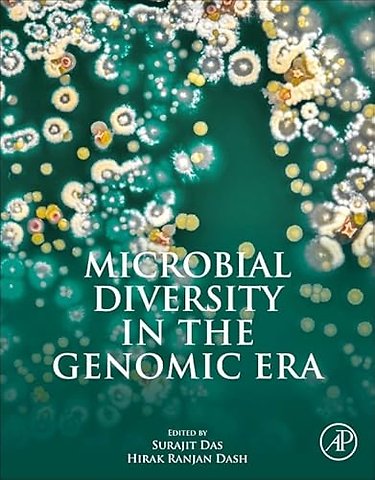<p>Section I: Overview of microbial diversity<br>1.1 Methods of assessment of microbial diversity in natural environments<br>1.2 Metagenomic Achievements in Microbial Diversity Determination in Croplands: A Review<br>1.3 Genomic diversity and evolution of rhizobia<br>1.4 Microbial biodiversity study of a brackish water ecosystem in eastern India: The Chilika Lake<br>1.5 Microbial diversity and community analysis of Sundarban mangrove, the world heritage site</p> <p>Section II: Molecular tools in microbial diversity<br>2.1Analysing Functional Microbial Diversity: An Overview of Techniques<br>2.2 Genetic analysis of the bacterioplankton biology and ecology through next-generation high-throughput molecular techniques</p> <p> Gurdeep Rastogi, Pratiksha Behera, and Madhusmita Mohapatra<br>2.3 Molecular tools in microbial diversity: Functional assessment tool of genome and metagenome by MAPLE<br>2.4 A polyphasic taxonomic approach for designation and description of novel microbial species<br>2.5 Biochemical strategies to counter nitrosative stress: Nanofactories for value-added products<br>2.6 Exploring microbial diversity and function in petroleum hydrocarbon associated environments through Omics approaches</p> <p>Section III: Extremophilic microbial diversity<br>3.1 Diversity of Psychrophilic Bacteria in Sea and Glacier Ice environments – Insights through Genomics, Metagenomics and Proteomics Approaches<br>3.2 Microbial diversity of thermophiles through the lens of next generation sequencing<br>3.3 Microbial ecology in extreme acidic environments: use of molecular tools<br>3.4 Alkaliphiles: Diversity and bioprospection<br>3.5Cyanobacteria from Brazilian extreme environments: toward functional exploitation<br>3.6 Comparative genomics of Halobacterium strains from diverse locations<br>3.7 Microbial community dynamics of extremophiles/extreme environment<br>3.8 Opening the black box of thermophilic autotrophic bacterial diversity</p> <p>Section IV: Functional Microbial Diversity<br>4.1Functional microbial diversity in context to agriculture<br>4.2 Functional microbial diversity in contaminated environment and application in bioremediation<br>4.3 Structural and functional diversity of microbial metallothionein genes<br>4.4 Functional diversity of bacterial strategies to cope with metal toxicity<br>4.5 Functional microbial diversity: Functional genomics and metagenomics using MAPLE<br>4.6 Linking the environmental microbial diversity and antibiotic resistance<br>4.7 Applications of metagenomics in microbial bioremediation of pollutants: From genomics to environmental cleanup</p> <p>Section V: Microbial diversity and infectious diseases<br>5.1 Molecular techniques for diagnosis of bacterial plant pathogens<br>5.2 Molecular techniques for the study of microbial diversity with special emphasis on drug resistant microbes<br>5.3 Exploring human bacterial diversity towards prevention of infectious disease and health promotion<br>5.4 Prevalence of Multidrug Resistance Efflux Pumps (MDREPs) in Environmental Communities<br>5.5 Pathogenic microbial genetic diversity with reference to significant medical and public health</p> <p>Section VI: Future directions of microbial diversity studies<br>6.1 Understanding the structure and function of extreme microbiome through genomics: scope and challenges<br>6.2 The role and future possibilities of next-generation sequencing in studying microbial diversity<br>6.3 Taxonomical diversity of extremophiles in the deep biosphere<br>6.4 Molecular evolution of Xenobiotic-degrading genes and mobile DNA elements in soil bacteria<br></p>
